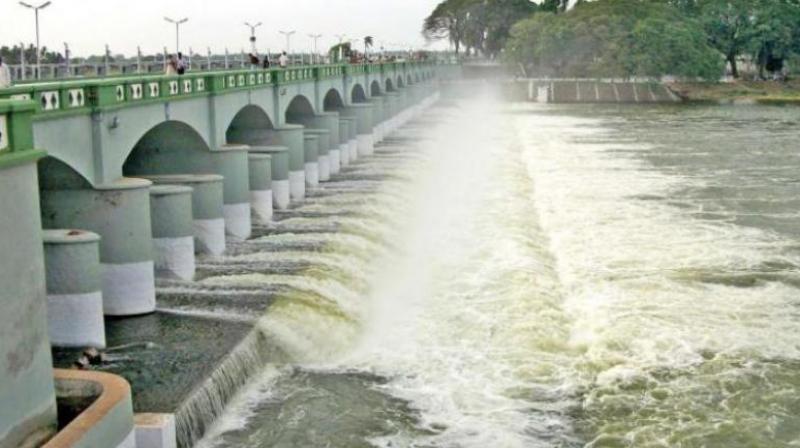Centre's Draft Scheme on Cauvery Dispute is Deceptive

Image Courtesy: Deccan Chronicle
Two days after Karnataka Polls, the Centre submitted a ‘draft scheme’ to the Supreme Court on May 14, on the Cauvery river water sharing dispute among the states Tamil Nadu, Karnataka, Kerala and the union territory Puducherry – ahead of its deadline, which was March 31. However, the scheme doesn’t seem to have a solution for the decades-old dispute.
A bench comprising Chief Justice of India Dipak Misra and Justices AM Khanwilkar and DY Chandrachud has asked the party states to examine the scheme’s conformity with the court’s last judgment in this matter and has listed the matter for next hearing on May 16.
While the scheme is essentially based on the 2007 recommendations of the Cauvery Water Disputes Tribunal (CWDT), there are certain contradictions and added clauses.
The scheme has proposed a nine-member authority and a Cauvery Water Regulation Committee (CWRC) with powers as recommended by the CWDT, and has asked the Supreme Court to prescribe the nomenclature of the authority. The members of this authority will have five nominees from the Centre and the remaining four nominees will be one each from the party states.
The scheme stated that in case of any dispute, the authority will have to seek the “directions” of the Centre. This is in contrast to the CWDT recommendations, which had ascribed only a consultant’s role to the Centre. Another significant difference is that while the CWDT recommended Bhakra Beas Management Board (BBMB) model, according to which, all assets including dams and reservoirs will be under the operation of the authority, the draft scheme does not talk about it. On the other hand, it stated that the authority could only guide the states on how to operate with the assets, leaving operating powers to the states.
There are eight reservoirs on Cauvery basin, four in Karnataka, three in Tamil Nadu and one in Kerala.
As an additional clause, the scheme has entrusted the authority to maintain an account of cropping pattern, area cropped and area irrigated around the Cauvery basin. The authority, according to the scheme, will also function as the dispute resolution mechanism among the riparian states.
The draft scheme left the task of operation of assets with the states, under the guidance of the authority, and the authority is supposed to approach the Centre in case of non-compliance of its guidance. This will always leave scope for legal battles, which has been the case for the Cauvery dispute for decades. While the Tamil Nadu government and its opposition parties are yet to respond on the scheme, activists who have been involved in this matter are arguing that the to-be-constituted authority should have operating powers over assets.
S Ranganathan, general secretary, Cauvery Delta Farmers Welfare Association said that the Tamil Nadu government should get “categorical orders from the Supreme Court that the authority or scheme or board to be formed should have the powers as mentioned in the Cauvery tribunal award and should have powers over the dams in Karnataka”.
Criticising the scheme as BJP’s “puppet scheme”, Cauvery Rights Retrieval Committee leader P Maniarasan questioned, “Control of dams is not with the authority to be formed. It is a known fact that Karnataka did not obey the SC directives in the past. As such, how can one believe that Karnataka will obey the ‘guidance’ of the authority?”
Get the latest reports & analysis with people's perspective on Protests, movements & deep analytical videos, discussions of the current affairs in your Telegram app. Subscribe to NewsClick's Telegram channel & get Real-Time updates on stories, as they get published on our website.
























